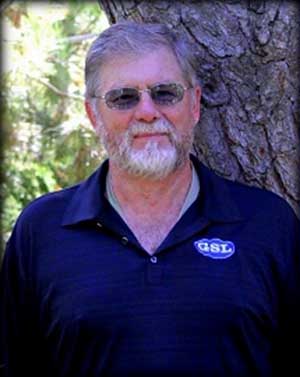
Doug Anyan of G.S. Long recommends growers take soil samples in an X pattern across their field before planting a new cherry orchard to obtain a representative cross-section. He also suggests at least 20 samples, though 50 or more are ideal, taken from the locations of the future tree rows. (Courtesy Doug Anyan/G.S. Long)
Doug Anyan has been making fertilizer recommendations to farmers since 1973.

Doug Anyan
He recently retired from G.S. Long after decades of advising growers, including those with tree fruit, in the Yakima Valley and the Columbia Gorge about nutrition management.
In February he shared a few thoughts about how growers should go about preplant nutrition programs in a talk at the Mid-Columbia Cherry Day in The Dalles, Oregon.
Here are a few tips from his presentation.
Choose your irrigation system
“If you’re looking at a drip system, I would rarely do a preplant fertilizer unless you’re really out of whack on pH or something along those lines.”
The big picture
Start by reviewing Google Earth images to see patterns in vegetative growth. You may choose to break up your future blocks into separate sections and sample them individually if you see large differences between one spot and another.
X marks the sample spots
Anyan recommends sampling a new field in an X formation to get a cross section of the field’s soil diversity. For large fields, he follows an hourglass pattern. Take at least 20 samples, though he recommends 50 or 100 depending on the field size.
If you can, lay out your row spacing ahead of time and sample only where your tree rows will be. That way you’re measuring the soil only where roots will reach for nutrients. He doesn’t mind cover crops, but he doesn’t suggest growers spend a lot of money fertilizing them. “If you guys are feeding the cover crop and you’re mowing it, you just keep on spending money.”
Stick with people you know
After you have soil samples, choose a laboratory to send them. Anyan suggests picking one with a good history and then sticking with it, so you get used to reading the results. Each one seems to report things a little differently.
In his 25 years as a soil consultant, he has used three different labs. He knows the reports so well, “I don’t have to think,” he said. “I’m lazy.”
Spend money on soil pH
In his opinion, finding an ideal soil pH balance is job No. 1. Washington State University recommends between 6.5 and 7.5 for tree fruit. He urges growers to get it as close to 7 — dead center — as possible. If you are going to spend money only in one place, that’s the place. “That’s going to be the most bang for your buck.” And preplant is the best timing.
Balancing the numbers
The soil sample reports will show hard numbers of parts per million, but he pays closer attention to the percent base saturation. The WSU soil lab will have recommendations for where tree fruit soil should fall. However, Anyan sometimes disagrees with those.
He and WSU both suggest shooting for potassium levels at 4 percent, which some soil labs will say is too low. Tree fruit needs less potassium than other crops; “4 percent is plenty.”
WSU suggests sodium between 1 percent and 5 percent. He prefers to see it less than 1 percent. “Tree roots don’t like sodium.”
WSU recommends maximum hydrogen levels below 5 percent, which he thinks is too high for new trees. He would rather see it below 1 percent.
Compost
Anyan believes in compost. “I’ve preached for years that if you can get compost, put it out. Compost does amazing things.”
Applicators
Anyan favors using banded applicators, which limit nutrients to targeted areas, over broadcast spreaders. The banded applicators save money by applying nutrients only to the future tree rows. Again, nothing against cover crops, but that’s not where you want to spend money on fertilizers and compost. •
—by Ross Courtney






Leave A Comment